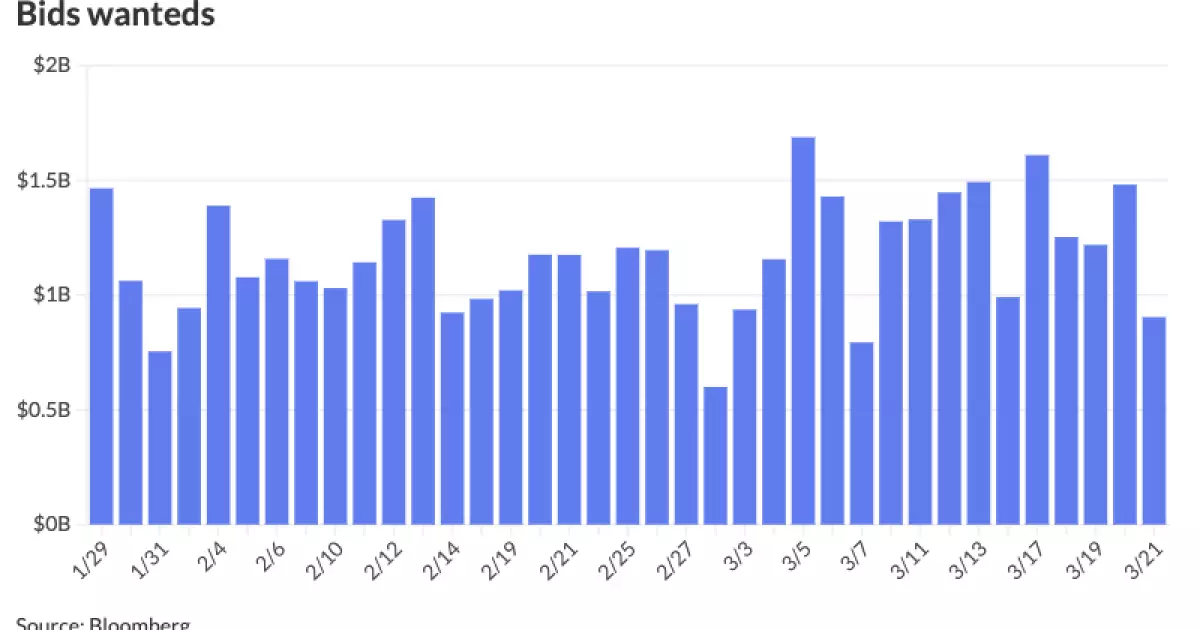Municipal bonds, often viewed as a safe haven for conservative investors, are beginning to reveal cracks in their seemingly stable facade. Amidst rising U.S. Treasury yields and tumultuous equities markets, the implications for municipal bonds are severe. The current data indicates that various ratios of municipal to U.S. Treasury yields have deteriorated, dropping to concerning levels. This article will explore the recent developments in the municipal bond market, why they signal a growing crisis, and what this means for investors moving forward.
The Erosion of Ratios: A Red Flag
Recent figures from Municipal Market Data indicate alarming ratios of two-year, five-year, ten-year, and thirty-year municipal to UST bonds. A two-year ratio of 66% alongside the five-year at 69% shows a downward trend that should cause concern among investors. These numbers reflect a significant weakening of municipal bonds, suggesting that investors are losing confidence at an unprecedented rate. When bonds that were once regarded as a conservative choice show signs of weakness, it is essentially a clarion call for a shift in investment strategy.
The latest shifts illustrate not merely a market fluctuation but a fundamental reshaping of municipal bonds’ attractiveness. Historically, these bonds have provided a stable source of income, especially for risk-averse investors. However, substantial shifts in ratios signify that this status quo may no longer hold. Investors must be vigilant, as these ratios indicate growing risks that could lead to greater municipal defaults in the future.
Supply and Demand: A Volatile Tug-of-War
Adding fuel to the fire is the burgeoning supply of municipal bonds, estimated at $7.9 billion this week. The oversaturation of the market threatens to undermine pricing power and stability. While strategists from J.P. Morgan assert that the relatively light supply may provide a counterbalancing force, it’s essential to consider the external pressures at play. The interplay between volatile Treasury yields and this newfound supply creates a precarious situation where investors may find themselves with a less-than-desirable investment portfolio.
Moreover, the upcoming issuance from the likes of the Los Angeles International Airport and Texas A&M University reflects a significant continued reliance on municipal financing. However, can these issuers manage to weather this storm when their bonds may not command the same level of interest? A cautious approach here is warranted; if upcoming issuances fail to attract adequate attention, we could see liquidity issues arise that further erode municipal bond trust.
Outflows and Their Consequences
Investor sentiment has undeniably shifted, with municipal mutual funds experiencing outflows of approximately $216.4 million last week alone. These withdrawals speak to a broader unease in the market. As Jason Wong from AmeriVet Securities pointed out, these outflows are exacerbated by investors’ hesitations due to the increasing yields and the stress of tax season.
The phenomenon of pulling investments at such scale indicates a loss of appetite for municipal bonds, further causing market stagnation. Even as the market appears to generate some decent weeks of absolute performance, these outflows signify a lack of long-term confidence in performance sustainability. The simple reality is that continuing high yields paired with a declining appeal for taxation-incented investments will lead to a prolonged period of instability. It raises the question: how many more investors are willing to wait for conditions to improve?
The Long End and Its Rising Attractiveness
Interestingly, the long end of the municipal curve has seen some support amidst these challenges. This ongoing attractiveness of longer maturities, as stated by portfolio manager Daryl Clements, ought to factor into investment decisions heavily. If the long-term bonds are faring better, investors could pivot towards these options, but at what cost? The inconsistent interest in longer municipalities amidst widespread fears and ongoing volatility in yields is puzzling, to say the least.
As competitive deals come to market, there’s the risk that auction failure will escalate – leading to a burgeoning crisis perception. With the right strategies, long-term investors could potentially leverage this dynamic. However, the inherent risks remain high. The growing specter of interest rate volatility demands careful consideration as the market seeks to navigate uncertain waters.
The Future: A Cautionary Path Ahead
Looking forward, the municipal bond market faces a precarious crossroads. The indicators suggest volatility may be here to stay, with the rising risk of liquidity issues coupled with investor reluctance. Those still considering municipal bonds ought to weigh the potential short-term gains against a deeply fluctuating market. Simply put, inflated valuations may mask deeper issues that could materialize rapidly.
The atmosphere surrounding municipal bonds is one steeped in uncertainty. While some sectors within the market might appear appealing, prudent investors would benefit from adopting a cautious mentality. The coming weeks will be critical, and the ongoing relationship between supply and demand could determine the fate of these once-reliable assets. Investors must prepare for a tumultuous path ahead, where only those willing to adapt their strategies will find the light at the end of the tunnel.

